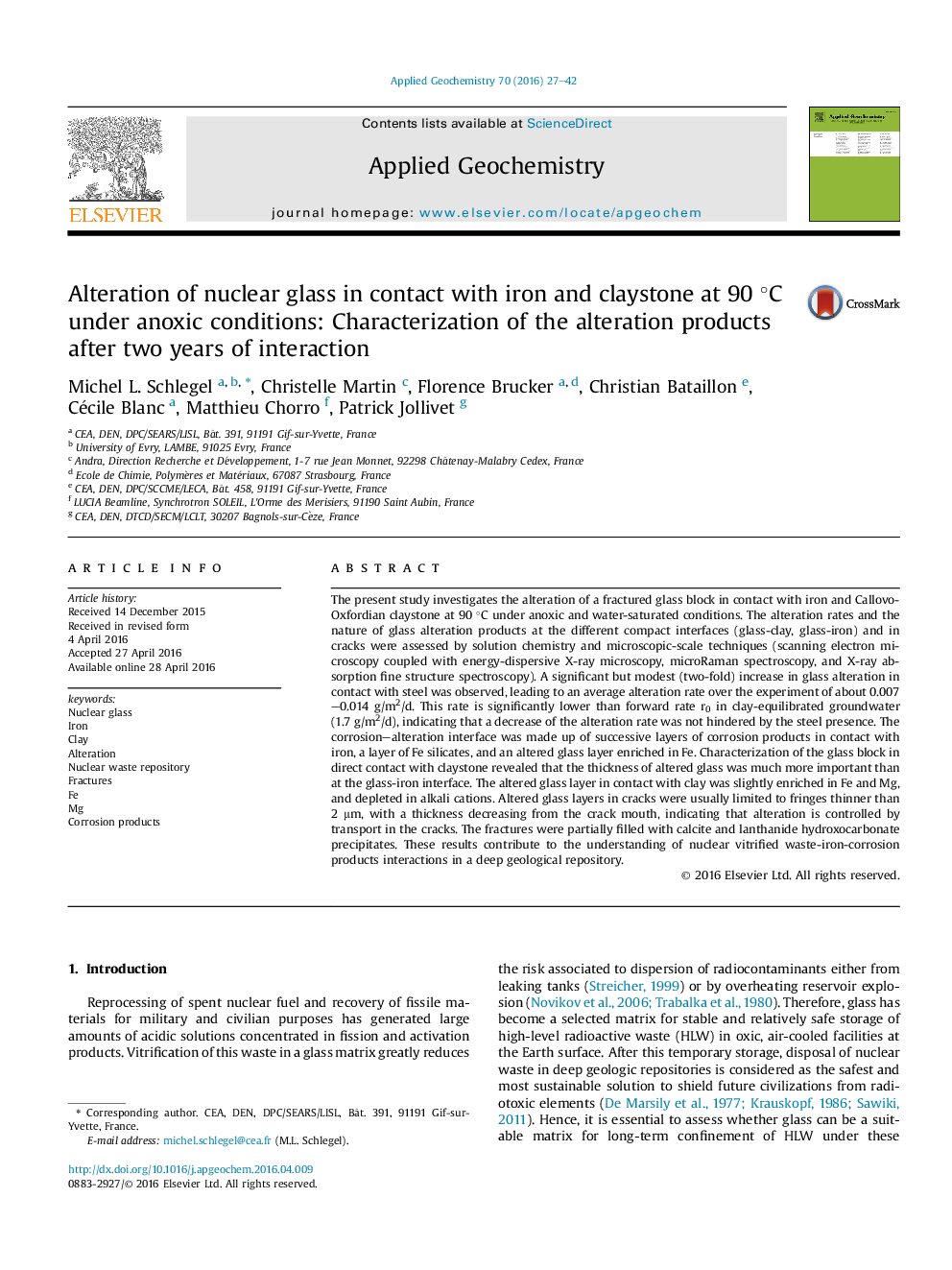| Article ID | Journal | Published Year | Pages | File Type |
|---|---|---|---|---|
| 4435551 | Applied Geochemistry | 2016 | 16 Pages |
•Anoxic alteration of glass in contact with iron and clay at 90 °C for two-years.•Alteration rates of 0.015 and 0.5 g/m2/d at glass-iron and glass-clay interfaces.•Glass alteration layers enriched in Fe, Mg, covered by secondary precipitates.•Alteration in fractures limited, probably due to transport limitations.•Implication for disposal of nuclear glass are discussed.
The present study investigates the alteration of a fractured glass block in contact with iron and Callovo-Oxfordian claystone at 90 °C under anoxic and water-saturated conditions. The alteration rates and the nature of glass alteration products at the different compact interfaces (glass-clay, glass-iron) and in cracks were assessed by solution chemistry and microscopic-scale techniques (scanning electron microscopy coupled with energy-dispersive X-ray microscopy, microRaman spectroscopy, and X-ray absorption fine structure spectroscopy). A significant but modest (two-fold) increase in glass alteration in contact with steel was observed, leading to an average alteration rate over the experiment of about 0.007–0.014 g/m2/d. This rate is significantly lower than forward rate r0 in clay-equilibrated groundwater (1.7 g/m2/d), indicating that a decrease of the alteration rate was not hindered by the steel presence. The corrosion–alteration interface was made up of successive layers of corrosion products in contact with iron, a layer of Fe silicates, and an altered glass layer enriched in Fe. Characterization of the glass block in direct contact with claystone revealed that the thickness of altered glass was much more important than at the glass-iron interface. The altered glass layer in contact with clay was slightly enriched in Fe and Mg, and depleted in alkali cations. Altered glass layers in cracks were usually limited to fringes thinner than 2 μm, with a thickness decreasing from the crack mouth, indicating that alteration is controlled by transport in the cracks. The fractures were partially filled with calcite and lanthanide hydroxocarbonate precipitates. These results contribute to the understanding of nuclear vitrified waste-iron-corrosion products interactions in a deep geological repository.
